Wargame: European Escalation – Preview
by Samuel
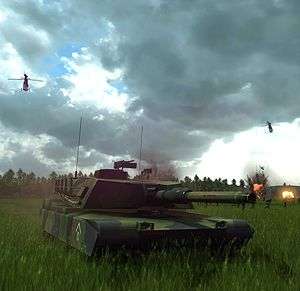 If you’re a fan of the real-time strategy genre, you’ve almost certainly heard of R.U.S.E – not only did the game receive plaudits for making RTS work on console control schemes, but it was also simply a really good tactical game. Its innovative layer of deception, espionage and propaganda based special actions, the “ruse de guerre” from which the game’s title was derived, added a complex but intuitive dynamic to battles that stood out from other strategy titles.
If you’re a fan of the real-time strategy genre, you’ve almost certainly heard of R.U.S.E – not only did the game receive plaudits for making RTS work on console control schemes, but it was also simply a really good tactical game. Its innovative layer of deception, espionage and propaganda based special actions, the “ruse de guerre” from which the game’s title was derived, added a complex but intuitive dynamic to battles that stood out from other strategy titles.
Now, French development studio Eugen Systems have announced a spiritual successor to R.U.S.E; Wargame: European Escalation, to be released in November on Windows PC, with a BETA coming soon this September. I was fortunate enough to have a one-on-one meeting with Eugen co-founder and creative director Alexis Le Dressay at Gamescom, where he showed off demos of both single and multiplayer, and talked in depth about how the game works.
The background story to the game revolves around an alternate history set between the Cold War years of 1975 and 1985. During this period both the West and Soviet Empire built up massive standing armies in their mutually belligerent sabre-rattling towards each other, and began development and production of much of what is now the basis for the current state of the art in military technology. Wargame asks what might have happened if some moment during that time had played out differently, with disastrous consequences – Alexis made the example of “What if American President Ronald Reagan dies when he was shot in 1983, rather than living?” Working on the assumption that some key moment had unravelled along a different course than it did, serving as a catalyst for the Russians invading Western Germany in a bid to grab the rest of continental Europe – the result being World War III breaking out – Wargame allows players to engage in all-out war between NATO and Warsaw Pact forces of the time.
The tech tree in the game is correspondingly vast – if it was used by either side during the decade that the game takes place in, then it is represented somewhere in this game, from basic infantry, through recon units, tanks, aircraft, and even unarmed supply and transport vehicles. More impressive still is the way every unit adheres to the genuine specifications of their real-world counterparts as much as possible.
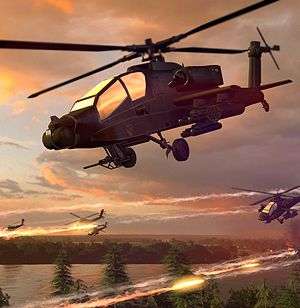 Take two main battle tanks, one of which was used by each side for example – a West German Leopard and Russian T-72, for the sake of argument. Rather than being designed to play in relatively comparable balance to each other, as in other strategy titles where the only real difference is visual appearance, in Wargame a Leopard IS a Leopard, with its historical strengths and weaknesses, and a T-72 is a T-72 with all of that tank’s actual ability and restrictions. Speeds, armour, armament, crew numbers, design flaws… even fuel consumption is based on the real thing. As well as moving and acting as the real thing would, each unit type is a highly detailed model, with location based damage points. A Leopard tank is fairly heavily armoured on the sides and rear, but vulnerable to shells from the front, and this is true in Wargame too – damage received is lessened when enemy fire of insufficient power hits the tank in a well armoured flank, but the same shot can devastate or destroy the unit if it hits head-on where the armour is weakest.
Take two main battle tanks, one of which was used by each side for example – a West German Leopard and Russian T-72, for the sake of argument. Rather than being designed to play in relatively comparable balance to each other, as in other strategy titles where the only real difference is visual appearance, in Wargame a Leopard IS a Leopard, with its historical strengths and weaknesses, and a T-72 is a T-72 with all of that tank’s actual ability and restrictions. Speeds, armour, armament, crew numbers, design flaws… even fuel consumption is based on the real thing. As well as moving and acting as the real thing would, each unit type is a highly detailed model, with location based damage points. A Leopard tank is fairly heavily armoured on the sides and rear, but vulnerable to shells from the front, and this is true in Wargame too – damage received is lessened when enemy fire of insufficient power hits the tank in a well armoured flank, but the same shot can devastate or destroy the unit if it hits head-on where the armour is weakest.
Maps in Wargame are significantly larger than in R.U.S.E, with a maximum area of 12 x 12 kilometres. And if that isn’t good enough for you, then the new and refined version of the game engine is capable of showing sixty million individual objects at any one time, and now zooms in tight on each unit to show the actual fighting in real-time with realistic effects, something that wasn’t possible in R.U.S.E. Terrain elevation and variety have been introduced to complement the existing line-of-sight, and the evolution of towns and forests from large areas of effect that remain constant to actual, complex arrangements of individual trees and buildings – all of which can be destroyed, as can any object in the game – mean that you no longer feel disconnected from what is happening on screen. No longer will you see a round token with a basic vehicle type icon above it when a unit enters a town that’s essentially just a large coloured blob on the battlefield overview. Rather, you follow your vehicles into towns, or into forests where the trees become an obstruction to both firing and movement. Tanks are slowed dramatically in forests, and can even lose their tracks in the more difficult terrain, resulting in a cool-down period while the crew affect field repairs. ![]()
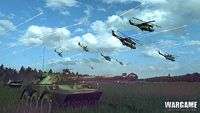 |
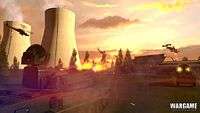 |
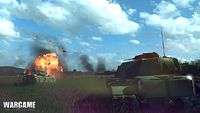 |
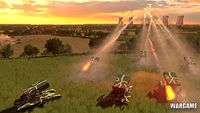 |
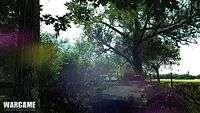 |
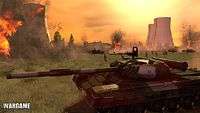 |
Not only that, the lack of tokens to show hidden units’ locations apply also to enemy forces as well. You can’t rely on knowing that there is something there and vaguely what it might be anymore. If your units and intelligence are unaware of something, then you won’t know it’s there until your opponent makes the first move or you accidentally collide with it. Buildings can be destroyed and fires started in wooded areas and hedgerows, but with the sheer volume of covering objects on the map you can’t possibly use a scorched earth policy to ensure enemies have nowhere to hide. Not to mention you’d also be unable to use these features to your own advantage when forced to be cautious, use an ambush, or tactically retreat in response to an equally or more powerful enemy force.
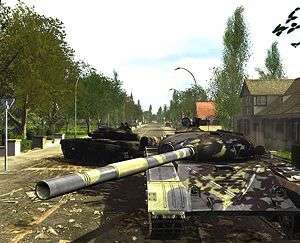 The unit AI is very impressive in Wargame, with troops and vehicles moving realistically depending on the circumstances and terrain and enemy, etcetera. If you send out a pair of helicopters on patrol, they move as they actually would on a real patrol. If you’re on the run from a larger enemy force, your tanks present their well-armoured rears to their opponents and spin their turrets to continue firing back without needing to be told. If you order a unit to attack an enemy it has no hope of defeating, it will tell you that it doesn’t stand a chance and refuse to attack, rather than committing suicide. There is a morale bar feature too, which affects how rationally each unit’s AI responds, depending on several variables. If things get too bad they will simply panic and flee, ignoring orders.
The unit AI is very impressive in Wargame, with troops and vehicles moving realistically depending on the circumstances and terrain and enemy, etcetera. If you send out a pair of helicopters on patrol, they move as they actually would on a real patrol. If you’re on the run from a larger enemy force, your tanks present their well-armoured rears to their opponents and spin their turrets to continue firing back without needing to be told. If you order a unit to attack an enemy it has no hope of defeating, it will tell you that it doesn’t stand a chance and refuse to attack, rather than committing suicide. There is a morale bar feature too, which affects how rationally each unit’s AI responds, depending on several variables. If things get too bad they will simply panic and flee, ignoring orders.
Weapons are listed independently according to each unit, and can fire on separate targets in accordance with what they are designed to most effectively combat. They also have separate ammunition stockpiles, and behave completely accurately to the real thing, in terms of range, power, reload times, and even muzzle velocity. The physics engine powering all of this is seriously impressive, and the game is controlled with a very intuitive user interface that somehow simplifies all of this to stop the player having to micromanage and juggle everything for themselves, unless they really want to. Chances to hit opponents are shown with percentages, and clear field of fire and range with differently coloured mouse cursors. You can group up to four units together at a time, too, and the interface keeps this simple to keep track of even with differing unit types.
Artillery works slightly differently to direct combat units in that the view zooms out and you’re given target zones – large circles for fire to land within, with realistic dispersal patterns, which shrink and expand according to the conditions and the types of long range weapons being used. Smart bombs and guided missiles are more accurate than unguided rockets, for example, which can veer all over the place before they hit something and explode.
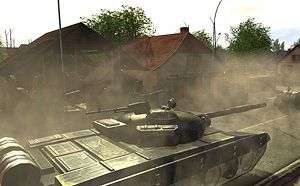 Supply lines are very important, with the realistic ammunition and fuel consumption, and are handled by the player deploying a supply truck or helicopter with a supply point total, and having units meet with it to resupply. Players dictate what is replenished, and points are removed from the total available in the supply vehicle according to how valuable the thing being replaced is – fuel and a few cannon rounds are very cheap, but hellfire missiles or rockets cost much more. As well as these supply vehicles you can establish forward command posts which also are able to resupply your forces.
Supply lines are very important, with the realistic ammunition and fuel consumption, and are handled by the player deploying a supply truck or helicopter with a supply point total, and having units meet with it to resupply. Players dictate what is replenished, and points are removed from the total available in the supply vehicle according to how valuable the thing being replaced is – fuel and a few cannon rounds are very cheap, but hellfire missiles or rockets cost much more. As well as these supply vehicles you can establish forward command posts which also are able to resupply your forces.
The multiplayer side of the game supports both offline local LAN play and also a wide range of online methods to connect, including random matchmaking, clans and friends, and tournaments. It differs from the single player in that each opponent is asked to build a ‘deck’ of available unit types at the start of the game – up to twenty-five units, with a maximum of five from each different unit category. This includes non-combative units too, so you need to select supply and recon units as part of your deck unless you want to run out of steam mid-fight and lose through attrition. Every unit also has a range of upgrades to choose from, and you can also create them as elite units, already levelled up with bonuses and enhanced abilities, at a higher deployment cost. The map is divided into sectors during multiplayer games, with each player granted starting zones which provide resources and serve as reinforcement entry areas. Capturing additional sectors increases the amount of resources you gain over time to buy supplies and replacement units.
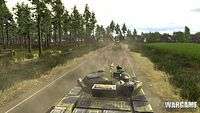 |
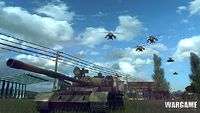 |
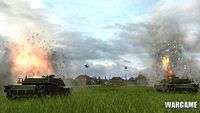 |
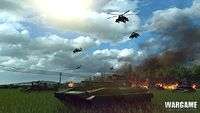 |
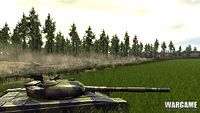 |
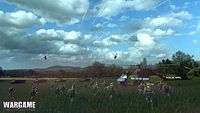 |
Visually the game is very impressive, and it sounds great too. It’s a massive improvement over R.U.S.E in virtually every department, and looks better than just about any other strategy title I can think of as well, including Men of War: Assault Squad, which blew me away at the start of the year. The game is only slated for a PC release at the moment – I asked Alexis if this would change and the game be brought to consoles at a later point, considering how widely-praised R.U.S.E was for its console iterations, and he was somewhat coy, only saying that for now the plan is just to release on PC but that anything was possible.
Wargame: European Escalation is definitely a game to keep an eye on if you like your strategy big and involved, and your tactics historically accurate. I do, and I can’t wait – between the rival Men of War series and this game, 2011 is looking to be a very good year for the RTS gamer.
Last five articles by Samuel
- Wargame: European Escalation - Preview
- Sony Conference - GamesCom 2011
- Gotham City Impostors Hands-On Preview
- WipEout 2048 - Hands-On Preview
- City to City - Travelling to Cologne via London with Gerry Rafferty














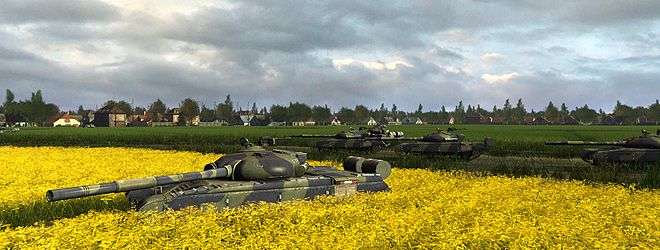
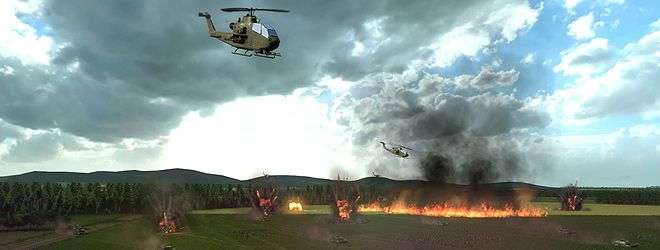





Looks like a game my grandad would like
Looks and sounds good, but I expect it to be a massive and quite complex time sink!
Hate to nit pick but tanks are more armoured at the front not the rear
I hate to nitpick too, but it depends on which tank you’re talking about, and when. The Leopard was initially comparatively lightly armoured at the front and had various vulnerabilities. It relied on an angled hull to deflect fire instead of resisting a direct hit. This was later addressed in modified variations used by different countries around the world, who reinforced and up-armoured the front of the hull to meet their own specifications and requirements. Fact remains that in the original design the armour wasn’t that great at the front.
Research is a wonderful thing.
I concede the point Samuel.
A question occurs though: Was this to allow more proficient retreating? in all seriousness not trolling or some such.
In all honesty, I don’t know. If it were me designing a tank I’d be inclined to armour it as well as possible on all sides. The tanks were required to be able to operate in environments contaminated with nuclear radiation and chemical weapons, as were all NATO tanks designed in that era because of their potential hostilities with the chemical happy Soviets, so possibly the apparatus involved in keeping the crew alive and self-contained took up room otherwise that might have been given to armour. That’s speculation on my part though. Generally speaking though, designers of weapons of war tend to view legging it from the enemy as a secondary concern, and one not to be encouraged amongst the troops, unless they’re working on developing light recon units.
I apologise if I seemed a bit snippy before, but I did think you were possibly trolling.